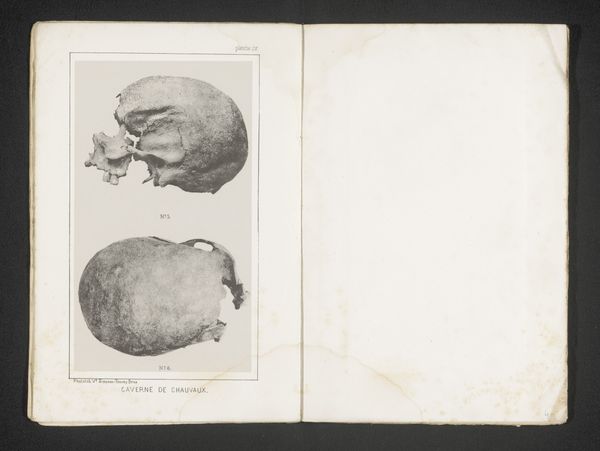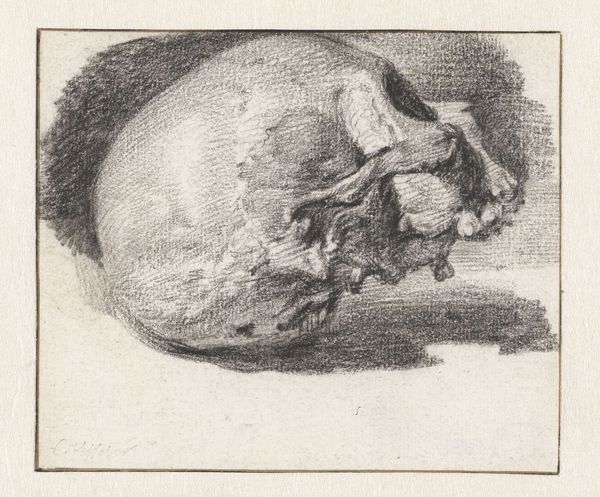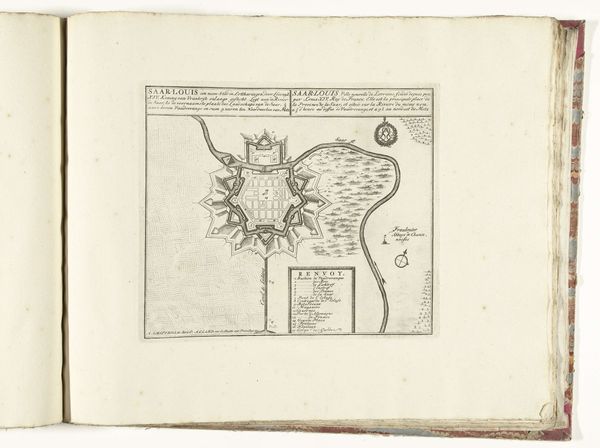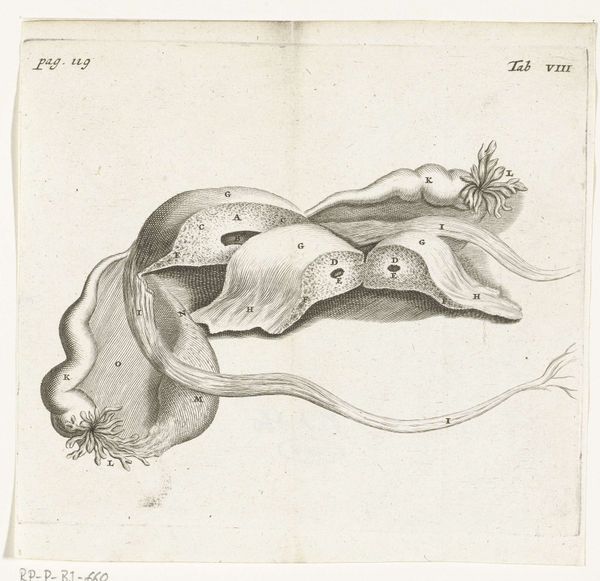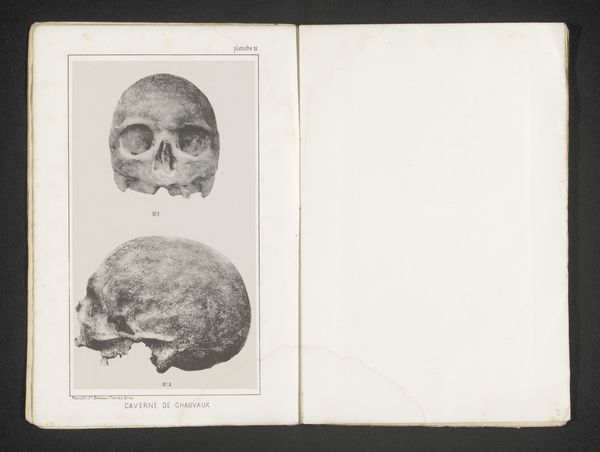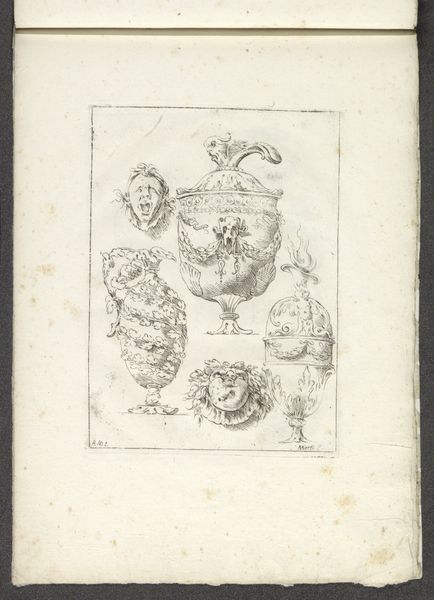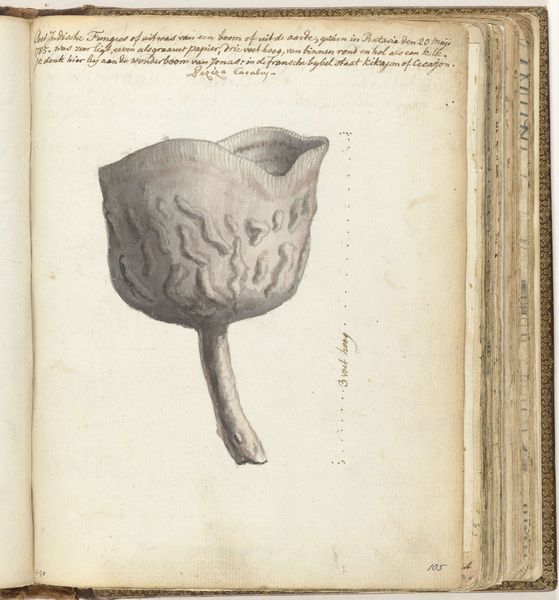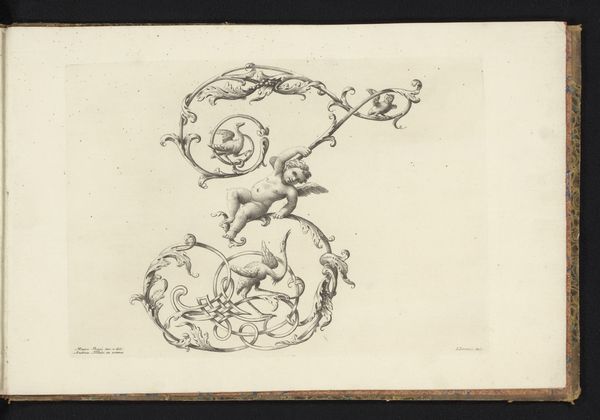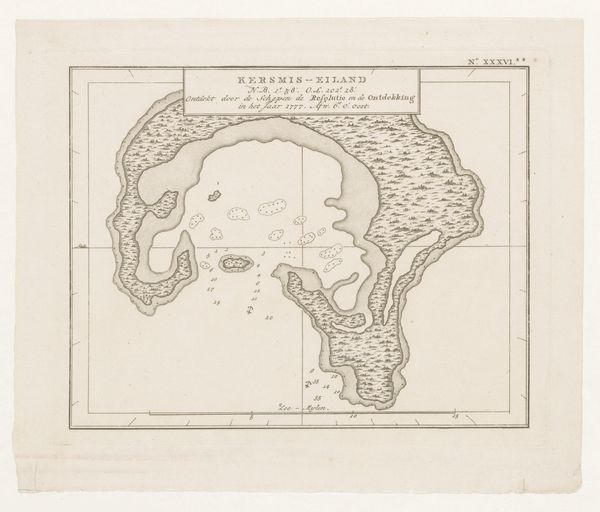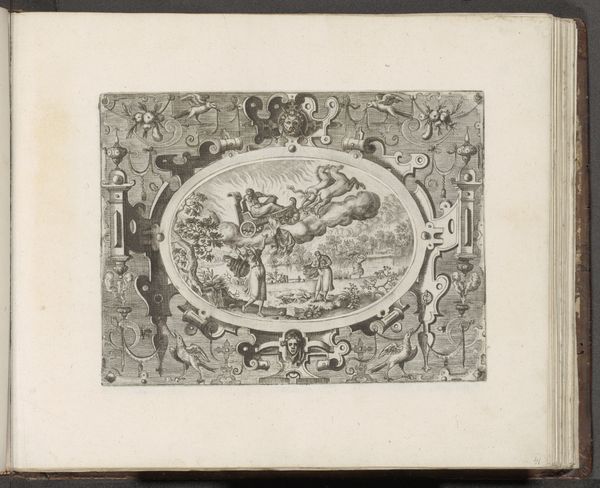
#
toned paper
#
ink painting
#
pencil sketch
#
personal sketchbook
#
ink drawing experimentation
#
sketchbook drawing
#
watercolour bleed
#
watercolour illustration
#
sketchbook art
#
watercolor
Dimensions: height 210 mm, width 270 mm
Copyright: Rijks Museum: Open Domain
This lithograph of the skull of Saint Rumbold was made in 1825 by Jan Vervloet. Lithography is a printmaking process that relies on the simple principle that oil and water don't mix. The artist draws an image on a flat stone or metal plate with a greasy substance. The stone is then treated with chemicals, so that only the drawn image attracts ink. Damp paper is then pressed against the inked stone to create the print. The process has important social implications. Lithography allowed for the relatively quick and inexpensive reproduction of images. The image is reproducible, available not just to the elite, but to a mass audience. Consider the cultural and religious context of the print; the lithographic technique made the image accessible, and the veneration of the Saint accessible to a new, wider public. We should remember that even what looks like fine art is really a product of the era’s modes of production.
Comments
No comments
Be the first to comment and join the conversation on the ultimate creative platform.
